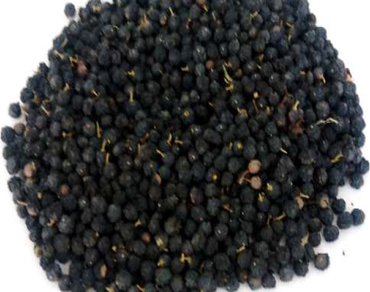The first study of fatty acids composition, tocopherols, carotenoids, sterols content and antioxidant activity of lipids in Phillyrea angustifolia L. fruits growing in Algeria
*Article not assigned to an issue yet
Boufissiou Ahmed, Boussoussa Hadjer, Harrat Mohamed, Chahrazed Hamia, Yousfi Mohamed
Research Articles | Published: 11 April, 2025
First Page: 0
Last Page: 0
Views: 339
Keywords: n Phillyrea angustifolian , Fruits, Fatty acids, Minor compounds, And antioxidant activity
Abstract
The current study aims at investigating the chemical composition of fatty acids and the quantification of sterols, tocopherols, and carotenoids in Phillyrea angustifolia (Oleaceae) fruits that grow in Algeria, as well as evaluating the antioxidant activity of dewaxed lipids. The latter’s composition within the studied samples is made up of the fatty acids that are usually found in olive fruits. P. angustifolia fruits are rich in unsaturated fatty acids with a total percentage of around 90%, represented mainly by Oleic acid (62.06–75.11%) and linoleic acid (13.00- 21.66%). Saturated fatty acids are also present in the taken samples, mainly palmitic and stearic, detected in considerable amounts. Additionally, the quantification of total sterols content and total tocopherols Content reveals that p. angustifolia’s fruit oil is rich in sterols and tocopherols with the amounts of 28.76–55.90 mg/g lipid and 5.02–10.14 mg/g lipid, respectively; also, total carotenoids content shows a lower amount (0.31–1.04 mg/g lipid). Finally, the antioxidant activities (DPPH, FRAP) demonstrate that dewaxed lipids in fruits manifest a good antioxidant activity. According to the obtained results. It must also be noted that this phytochemical study of fruits was conducted for the first time.

References
Barreto MC (2005) Lipid extraction and cholesterol quantification: A simple protocol. J Chem Educ 82(1):103
Bentireche F, Guenane H, Yousfi M (2019) Fatty acids, the unsaponifiable matter, and polyphenols as criteria to distinguish pistacia Atlantica unripe fruit oil. J Am Oil Chemists’ Soc 96(8):903–910
Benzie IFF, Strain JJ (1996) The ferric reducing ability of plasma (FRAP) as a measure of antioxidant power: the FRAP assay. Anal Biochem 239(1):70–76
Boucheffa S, Tamendjari A, Rovellini P, Venturini S (2014) Composition and antioxidant activity of some Algerian wild extra Virgin Olive oils. Rivista Italiana Delle Sostanze Grasse 91(3):177–185
Brand-Williams W, Cuvelier M-E, Berset C (1995) Use of a free radical method to evaluate antioxidant activity. LWT-Food Sci Technol 28(1):25–30
Emmerie A, Engel C (1939) Colorimetric determination of Tocopherol (vitamin E): II adsorption experiments. Recl Trav Chim Pays-Bas 58(4):283–289
Huang Y-L, Oppong MB, Guo Y, Wang L-Z, Fang S-M, Deng Y-R, Gao X-M (2019) The Oleaceae family: a source of secoiridoids with multiple biological activities
Katoch R (2011) Analytical techniques in biochemistry and molecular biology. Springer Science & Business Media
Mezouari S, Kochhar SP, Schwarz K, Eichner K (2006) Effect of dewaxing pretreatment on composition and stability of rice Bran oil: potential antioxidant activity of wax fraction. Eur J Lipid Sci Technol 108(8):679–686
Morin O, Pagès-Xatart-Parès X (2012) Huiles et corps Gras Végétaux: ressources fonctionnelles et intérêt nutritionnel. Oléagineux Corps Gras Lipides 19(2):63–75. https://doi.org/10.1051/ocl.2012.0446
Ribarova F, Zanev R, Shishkov S, Rizov N (2003) $α$-Tocopherol, fatty acids and their correlations in Bulgarian foodstuffs. J Food Compos Anal 16(6):659–667. https://doi.org/10.1016/S0889-1575(03)00079-6
Author Information
Centre National de Recherche en Biotechnologie, Ali Mendjli Nouvelle Ville, Constantine, Algeria